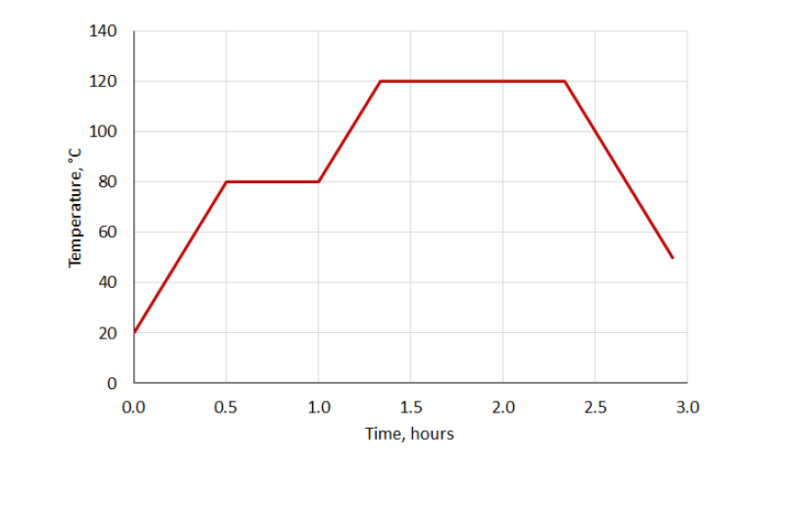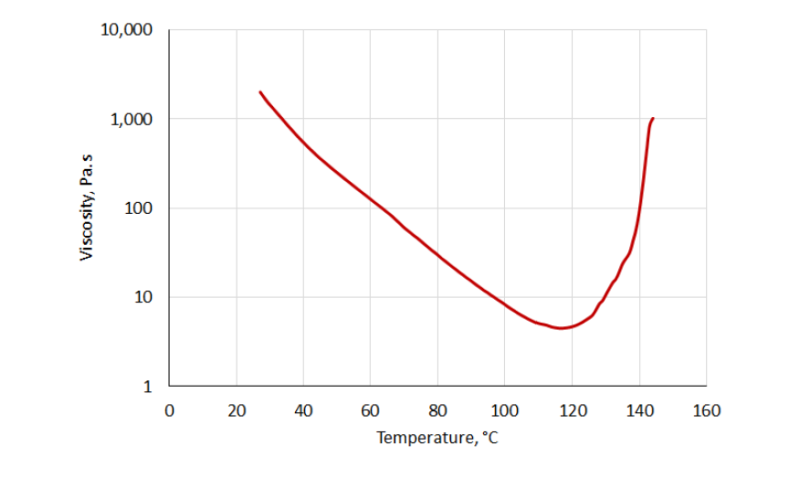Enhanced TDS
Knowde-enriched technical product data sheet
Identification & Functionality
- Chemical Family
- Polymer Name
- Reinforcement Material
- Composite Materials Functions
- Technologies
- Product Families
Features & Benefits
- Labeling Claims
- Materials Features
- Key Features & Benefits
- Flexible cure temperature 80-120°C
- Service temperature up to 130°C
- Suitable for autoclave and press molding
- 30 days out-life at room temperature
- 12 months storage life at -18°C
- Good tack and drape
- Toughened
- Excellent adhesion to core materials, including honeycomb
- Excellent surface finish
- Available on a wide range of reinforcement fabrics
Applications & Uses
- Markets
- Applications
- Cure Method
- Composites End Use
- Composites Processing Methods
Properties
- Composite Properties
Mechanical Properties of Monolithic Laminates
Typical data for laminates made from Evopreg® EPC300 ampliTex™ 5040 300 g/m2 2x2 twill flax fiber prepreg (Evopreg® EPC300-F300T-5040-45-1000) cured in an autoclave for 1 hour at 120°C and 6 bar pressure.
Property Result Test method Fiber content by volume, Vf 49% - Density 1.33 g/cm3 - Cured ply thickness 0.40 mm/ply - Flexural strength, 0° / 90° 215 MPa / 204 MPa ISO 14125 Flexural modulus, 0° / 90° 17.9 GPa / 17.2 GPa ISO 14125 Tensile strength, 0° / 90° 160 MPa / 160 MPa ISO 527-4 Tensile modulus, 0° / 90° 17.5 GPa / 17.5 GPa ISO 527-4 Compressive strength, 0° / 90° 136 MPa / 135 MPa ASTM D6641 Apparent interlaminar shear strength (ILSS), 0° 28.3 MPa ISO 141301 In-plane shear strength, ±45° 50.1 MPa ISO 14129 In-plane shear modulus, ±45° 2.0 GPa ISO 14129 Note : 1. Failure mode unclear
Typical data for laminates made from Evopreg® EPC300 ampliTex™ 5042 500 g/m2 4x4 twill flax fiber prepreg (Evopreg® EPC300-F500T-5042-48-1000) cured in an autoclave for 1 hour at 120°C and 6 bar pressure.
Property Result Test method Fiber content by volume, Vf 49 % - Density 1.32 g/cm3 - Cured ply thicknes 0.64 mm/ply - Flexural strength, 0° TBC ISO 14125 Flexural modulus, 0° TBC ISO 14125 Tensile strength, 0° 179 MPa ISO 527-4 Tensile modulus, 0° 18.5 GPa ISO 527-4 Compressive strength, 0° 145 MPa ASTM D6641 Apparent interlaminar shear strength (ILSS), 0° 27.2 MPa ISO 141301 In-plane shear strength, ±45° 89.1 MPa ISO 14129 Note : 1. Failure mode unclear
Typical data for laminates made from Evopreg® EPC300 ampliTex™ 5043 200 g/m2 2x2 twill flax fiber prepreg (Evopreg® EPC300-F200T-5043-48-1000) cured in an autoclave for 1 hour at 120°C and 6 bar pressure.
Property Result Test method Fiber content by volume, Vf 47 % - Density 1.31 g/cm3 - Cured ply thicknes 0.29 mm/ply - Flexural strength, 0° TBC ISO 14125 Flexural modulus, 0° TBC ISO 14125 Tensile strength, 0° 184 MPa ISO 527-4 Tensile modulus, 0° 18.5 GPa ISO 527-4 Compressive strength, 0° 152 MPa ASTM D6641 Apparent interlaminar shear strength (ILSS), 0° 27.0 MPa ISO 141301 In-plane shear strength, ±45° 104 MPa ISO 141292 Note : 1. Failure mode unclear
2. No clear failure, value taken at 5% strainTypical data for laminates made from Evopreg® EPC300 ampliTex™ 5057 150 g/m2 unidirectional flax fiber prepreg (Evopreg® EPC300-F150U-5057-50-1000) cured in an autoclave for 1 hour at 120°C and 6 bar pressure.
Property Result Test method Fiber content by volume, Vf 45 % - Density 1.30 g/cm3 - Cured ply thickness 0.23 mm/ply - Flexural strength, 0° / 90° 356 MPa / 58.4 MPa ISO 14125 Flexural modulus, 0° / 90° 26.3 GPa / 3.9 GPa ISO 14125 Tensile strength, 0° / 90° 269 MPa / 26.0 MPa ISO 527-4 Tensile modulus, 0° / 90° 30.4 GPa / 4.6 GPa ISO 527-4 Compressive strength, 0° / 90° 166 MPa / 111 MPa ASTM D6641 Apparent interlaminar shear strength (ILSS), 0° 32.7 MPa ISO 141301 In-plane shear strength, ±45° 52.3 MPa ISO 14129 In-plane shear modulus, ±45° 2.0 GPa ISO 14129 Note : 1. Failure mode unclear
Technical Details & Test Data
- Processing & Curing
The prepregs can be processed using standard techniques including autoclave and press
molding. Suggested cure cycles are shown below.Cure temperature Minimum cure time Glass transition temperature Tg, onset E’ Glass transition temperature Tg, peak tan δ 120°C 1 hours 124°C 142°C - Recommended ramp rate 1-3°C/min
- Cure times may need to be extended to account for thermal lag in large tools
- Optional post-cure 130°C for 1 hour
- Tg data for laminates made from a woven flax-reinforced epoxy prepreg (Evopreg® EPC300-F300T-5040-45)
Suggested cure cycle for standard autoclave cures at 120°C:

Alternative cure cycle to optimize surface finish:

Viscosity Profile

- Available Products
- In addition to ampliTex™ flax, Evopreg® EPC300 prepregs are available with a wide range of other reinforcements, including woven, non-woven, non-crimp stitched and unidirectional fabrics in the following fibers: carbon, glass, aramid and hybrids
- For improved performance of natural fiber composites, flax powerRibs™ are available. These are a stiffening material that when combined with flax/epoxy prepreg laminates, produce lightweight, stiff, natural fiber structures and components by forming a lattice structure of flax ribs on the back face of flax components.
Safety & Health
- Health & Safety
Please refer to the Safety Data Sheet (SDS) before use. This material contains epoxy resin and fibers which can cause irritation to skin and eyes and allergic reactions. Wear appropriate PPE including overalls and impervious gloves, and ensure adequate ventilation. Exothermic reactions can occur when curing epoxy resins, and particular care must be taken when curing thick laminates.
Packaging & Availability
- Packaging Type
- Packaging
The material is typically delivered in rolls and with a silicone coated release paper on the bottom and a polythene release film on the top. Typical packaging - 76 mm (3”) diameter cardboard core, polythene bag, reusable cable ties, cardboard box and end supports. Where relevant, multiple boxes are typically stacked on a standard wooden pallet, strapped and covered with stretch wrap. Other packaging may be available on request. We recommend retaining the boxed packaging to protect the material during storage.
Storage & Handling
- Shelf Life
- 12 Months
- Storage
The material should ideally be stored in a freezer at -18°C and sealed in a polythene bag. To protect the material, we recommend storing it in its original box with the end supports. To avoid moisture condensation, allow the material to defrost fully and reach room temperature before opening the polythene bag. Typical thaw time for full roll is 4-6 hours. Keep the material sealed in the polythene bag when not in use to prevent moisture absorption. The cable tie that seals the polythene bag is reusable. Out-life at room temperature is 30 days. Storage life at -18°C is 12 months.